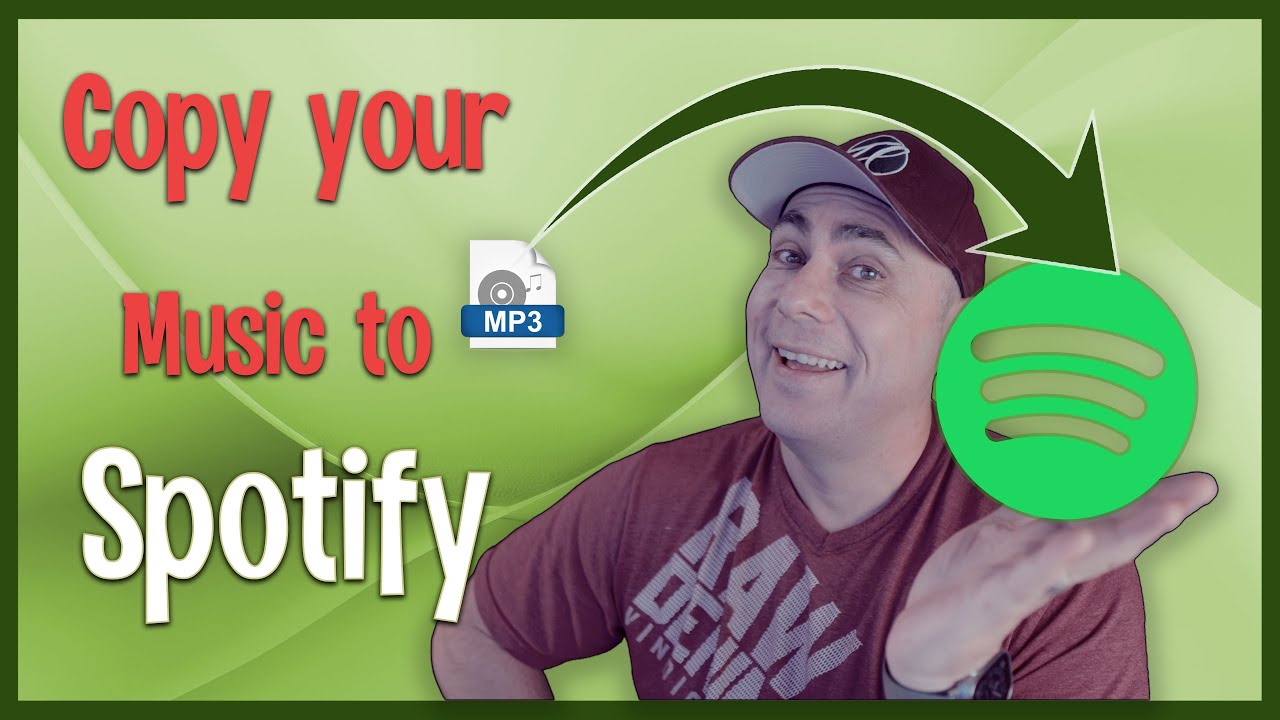Are you tired of juggling playlists between YouTube and Spotify? You’re not alone! Many of us love discovering music on YouTube but prefer the streamlined experience of Spotify for listening on the go. Fortunately, transferring songs between these platforms can be effortless. In this post, we’ll explore how you can easily add your favorite tunes from
Understanding the Legalities of Music Transfer

When it comes to transferring music from YouTube to Spotify, it’s crucial to be aware of the legal landscape. After all, no one wants to inadvertently enter into murky waters regarding copyright! Here’s what you should know:
- Copyright Concerns: The music you find on YouTube is often protected by copyright laws. While you can listen to it freely, downloading or redistributing that music without permission is a different story. If you’re simply transferring songs for personal use, you might be on safer ground, but it’s essential to tread lightly.
- Fair Use: Some might argue that transferring music falls under “fair use,” especially if it’s for personal enjoyment. However, this is a gray area. Fair use generally applies to commentary, criticism, or educational purposes, and using music solely for personal playlists doesn’t fit neatly into these categories.
- YouTube's Terms of Service: YouTube’s policies explicitly state that you cannot download content unless a download button or link is provided by YouTube. This means that using third-party tools to convert or download music could violate these terms, leading to potential account issues.
- Spotify's Guidelines: Spotify emphasizes the importance of using the platform legally. They provide licenses for the music available on their service, ensuring artists are compensated. Therefore, adding songs to your Spotify library should ideally be done through their official channels.
So, what does this mean for you? If you're looking to create a seamless listening experience, consider using legal alternatives. Tools like Spotify's built-in search allow you to find many songs already available on the platform. Think about creating playlists that include tracks from both YouTube and Spotify, ensuring you’re compliant with both platforms' guidelines.
In conclusion, while transferring music can be tempting, it’s essential to stay informed about the legalities to avoid any hiccups. Always prioritize respecting artists and their rights while enjoying the music you love!
Also Read This: How Much Money Is 8 Million Views on YouTube? Revenue Potential
3. Tools and Software for Transferring Songs

When it comes to moving your favorite tunes from YouTube to Spotify, having the right tools can make all the difference. Fortunately, there are several user-friendly software options available that can help streamline this process. Here’s a rundown of some popular choices:
- 4K Video Downloader: This handy tool allows you to download videos and audio from YouTube in various formats, including MP3. Just copy the YouTube link, paste it into the software, and select your desired format. It’s incredibly straightforward!
- YTMP3: If you prefer a no-installation approach, YTMP3 is a web-based converter that turns YouTube videos into MP3 files. Just enter the video URL, choose your format, and hit convert. It’s fast and efficient!
- Audacity: For those who want more control over their audio files, Audacity is a powerful, free audio editing tool. You can record YouTube audio directly and edit it to your liking before transferring it to Spotify.
- Soundiiz: If you’re looking to transfer entire playlists instead of single songs, Soundiiz is the way to go. This online service allows you to connect different music platforms and transfer playlists seamlessly.
- MusConv: Similar to Soundiiz, MusConv lets you transfer songs and playlists between various music services. It supports multiple platforms and is user-friendly, making it a great option for music lovers.
Choosing the right tool depends on your specific needs. Whether you’re looking for a simple conversion or a more comprehensive playlist transfer, these options have you covered. Remember to check the licensing agreements and copyright regulations when downloading music to stay on the right side of the law!
Also Read This: Why Are My YouTube Commercials in French? Understanding Regional Ad Settings
4. Step-by-Step Guide to Adding Songs from YouTube to Spotify
Now that you’re equipped with the right tools, let’s dive into how to effortlessly add your favorite songs from YouTube to Spotify. Follow these simple steps:
- Choose Your Tool: Decide which tool you’ll use for downloading songs from YouTube. For this guide, let’s assume you’re using 4K Video Downloader.
- Download the YouTube Song:
- Open YouTube and navigate to the video you want to convert.
- Copy the URL from the address bar.
- Open 4K Video Downloader and click “Paste Link.”
- Select the audio format (MP3 is recommended) and quality, then click “Download.”
- Add to Spotify: Once your song is downloaded, it’s time to add it to your Spotify library. You have a couple of options here:
- If you have the MP3 saved on your device, you can add it directly to Spotify by going to Settings > Local Files and enabling the “Show Local Files” option. Then, click “Add a Source” and select the folder where your downloaded songs are saved.
- Alternatively, you can upload the MP3 files to a folder in your cloud storage and use Spotify’s integration to access them.
And there you have it! With these steps, you can easily transfer your beloved tracks from YouTube to Spotify, ensuring your playlists are always full of the songs you love. Happy listening!
Also Read This: How to Download Songs from YouTube to Mac: Easy Steps for Music Lovers
5. Tips for a Smooth Music Transfer Experience
When it comes to transferring songs from YouTube to Spotify, a few tips can make the process more enjoyable and efficient. Here’s how to ensure a smooth music transfer experience:
- Choose the Right Tool: Not all converters are created equal. Look for reputable tools that are user-friendly. For instance, TuneMyMusic and Soundiiz are popular choices that have good reviews for their reliability.
- Check for Song Availability: Before you start the transfer, it’s a good idea to check if the songs you want are available on Spotify. There’s nothing worse than going through the hassle of transferring only to find your favorite tracks aren't there!
- Organize Your Playlists: If you have specific playlists on YouTube, consider organizing them before you transfer. This way, you can easily replicate your playlists on Spotify, keeping everything neat and tidy.
- Use High-Quality Settings: When transferring, ensure you select high-quality audio settings. Some tools allow you to choose the bitrate, so opt for the highest available to maintain sound quality.
- Double-Check Your Transfers: After the transfer is complete, take a moment to review your new Spotify playlists. Make sure that all songs have been transferred correctly and are in the right order.
By following these tips, you can minimize headaches and maximize your enjoyment of your music collection on Spotify!
6. Common Issues and Troubleshooting
Even with the best tools and intentions, you might encounter a few hiccups while transferring songs from YouTube to Spotify. Here are some common issues and how to troubleshoot them:
- Missing Songs: One of the most frequent issues is finding that some songs didn’t transfer. This can happen if the songs are unavailable on Spotify. To fix this, you can manually search for the tracks and add them to your Spotify playlist.
- Transfer Errors: If you experience an error during the transfer, it could be due to connectivity issues or server problems with the tool you’re using. Try refreshing the page, restarting the tool, or even using a different browser.
- Playlist Formatting Problems: Sometimes, playlists may not transfer in the same order or may have formatting issues. If that’s the case, you can manually adjust the playlist order in Spotify or recreate it from scratch.
- Account Issues: Make sure you are logged into both Spotify and YouTube correctly. If you face authentication issues, try logging out and back in to refresh your session.
- Slow Transfer Speeds: If the transfer is taking too long, check your internet connection. A slow connection can significantly delay the process. Switching to a wired connection or moving closer to your Wi-Fi router might help speed things up.
By being aware of these common issues and knowing how to troubleshoot them, you can make your experience transferring songs from YouTube to Spotify much smoother!
 admin
admin








